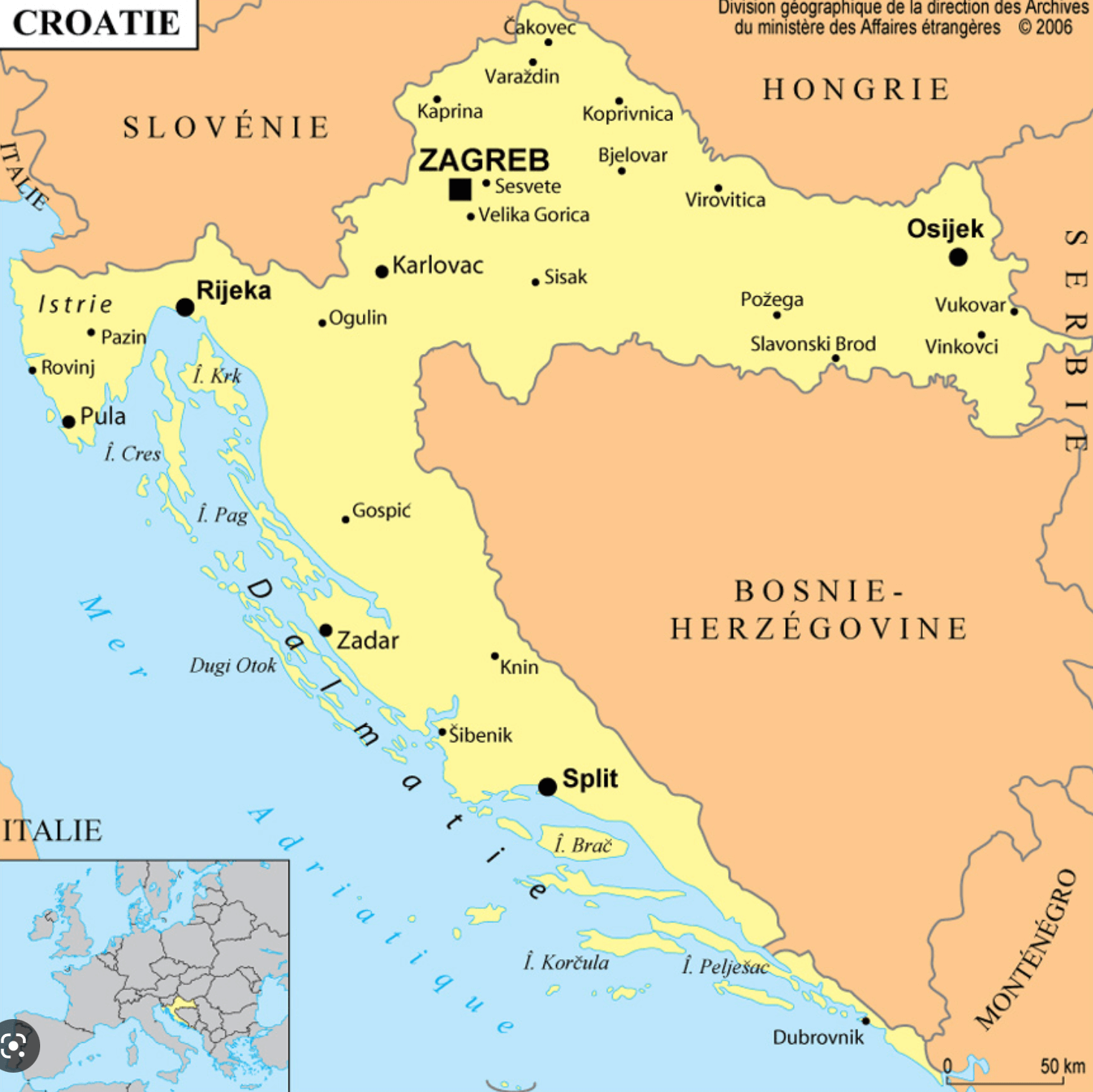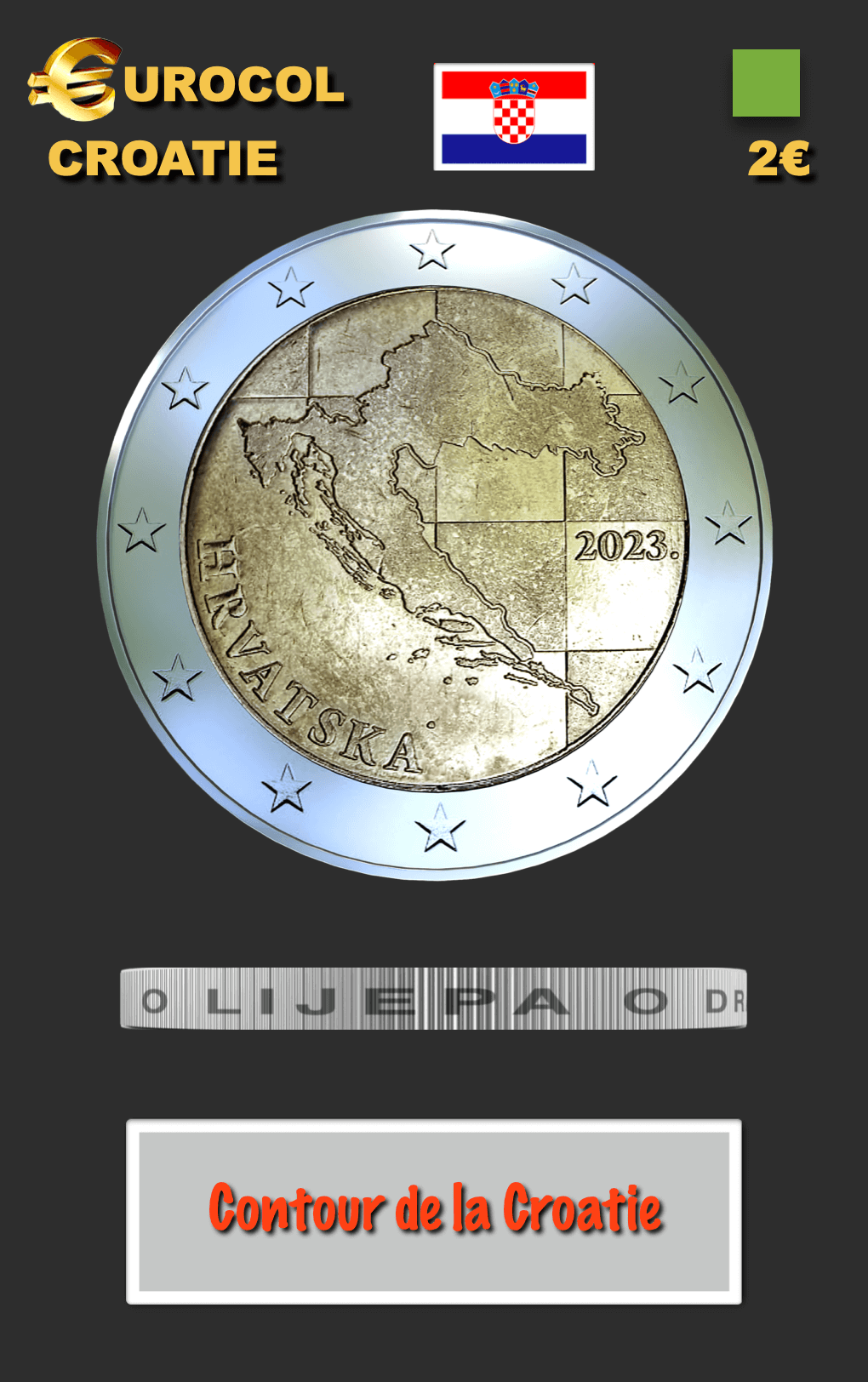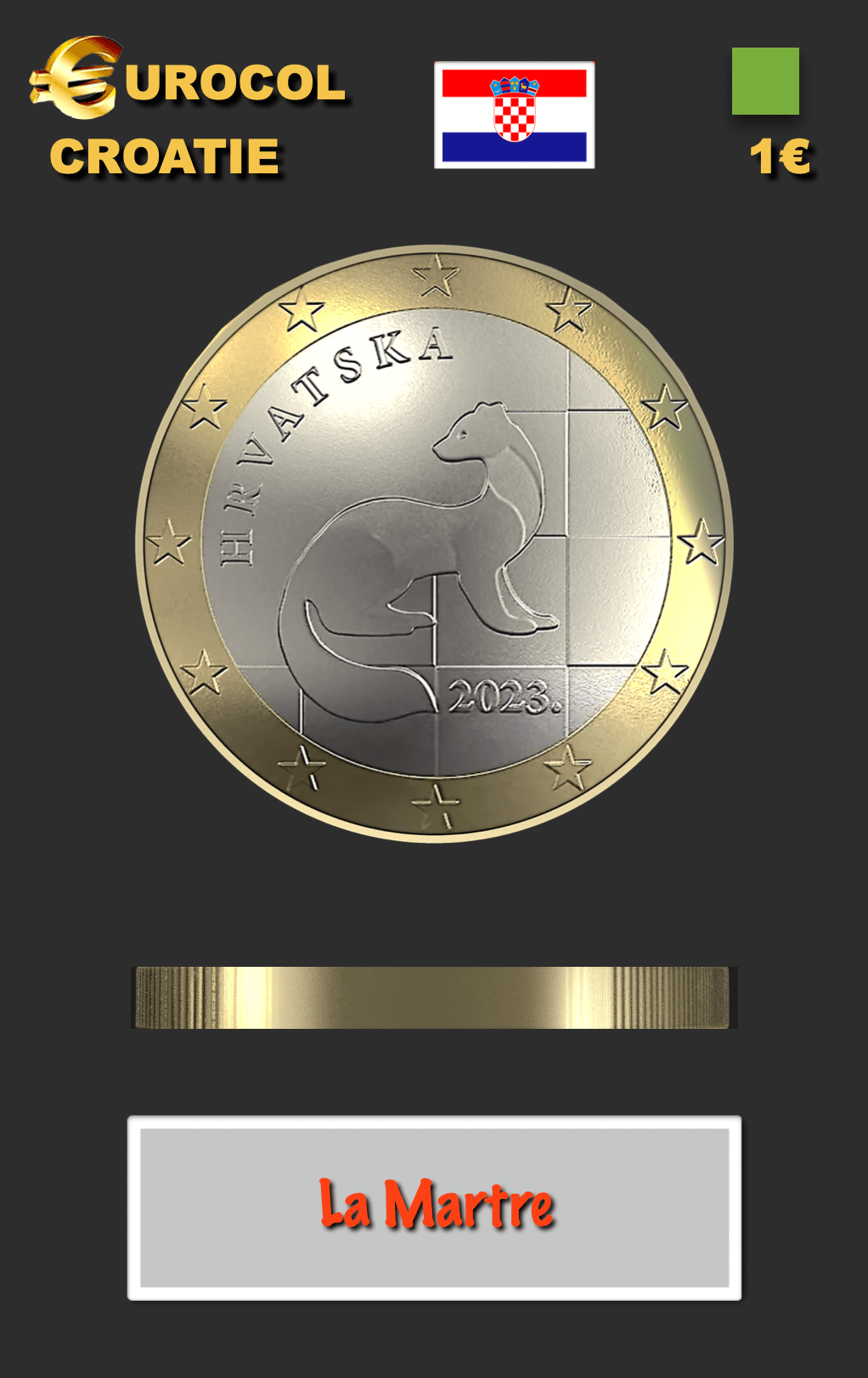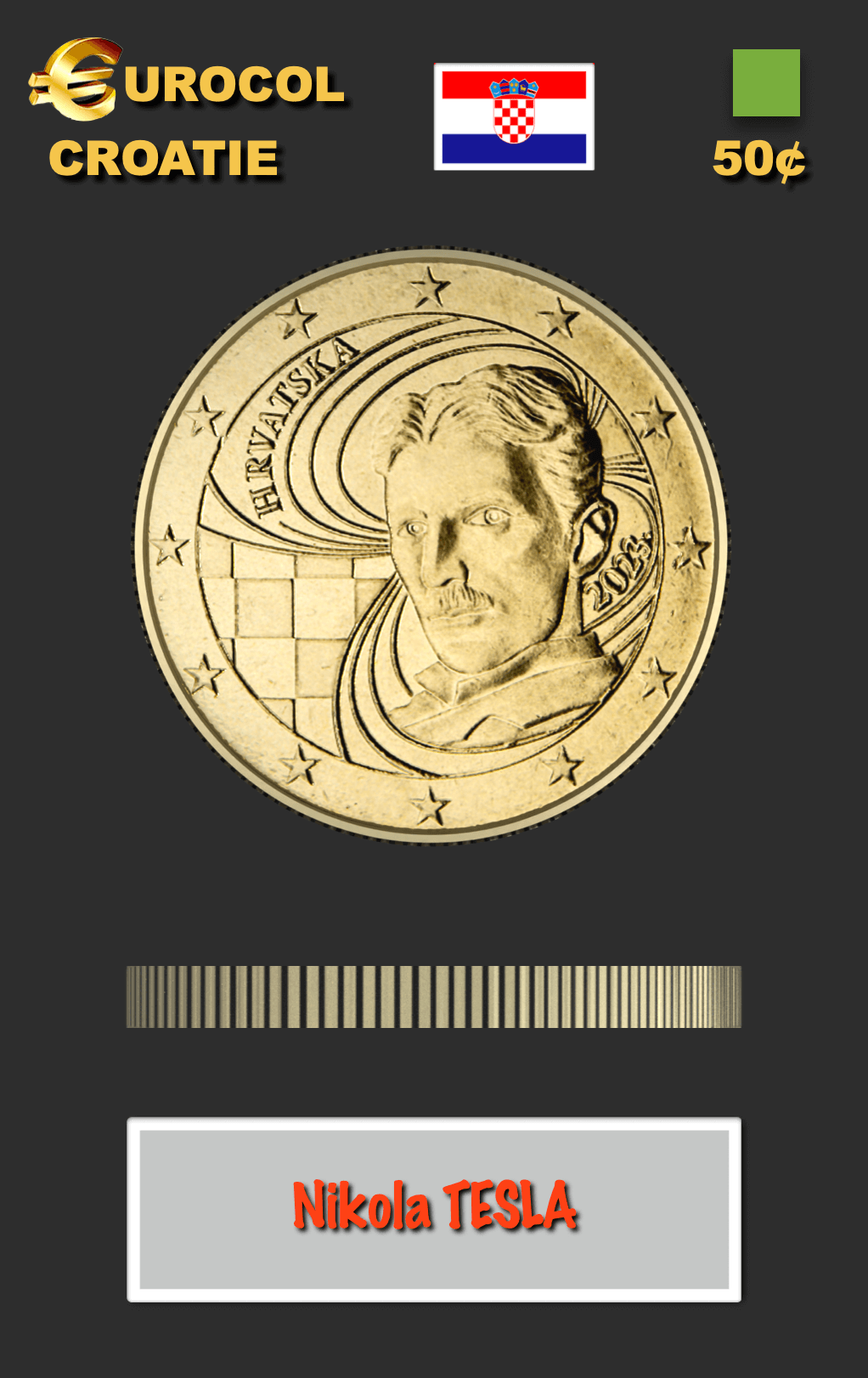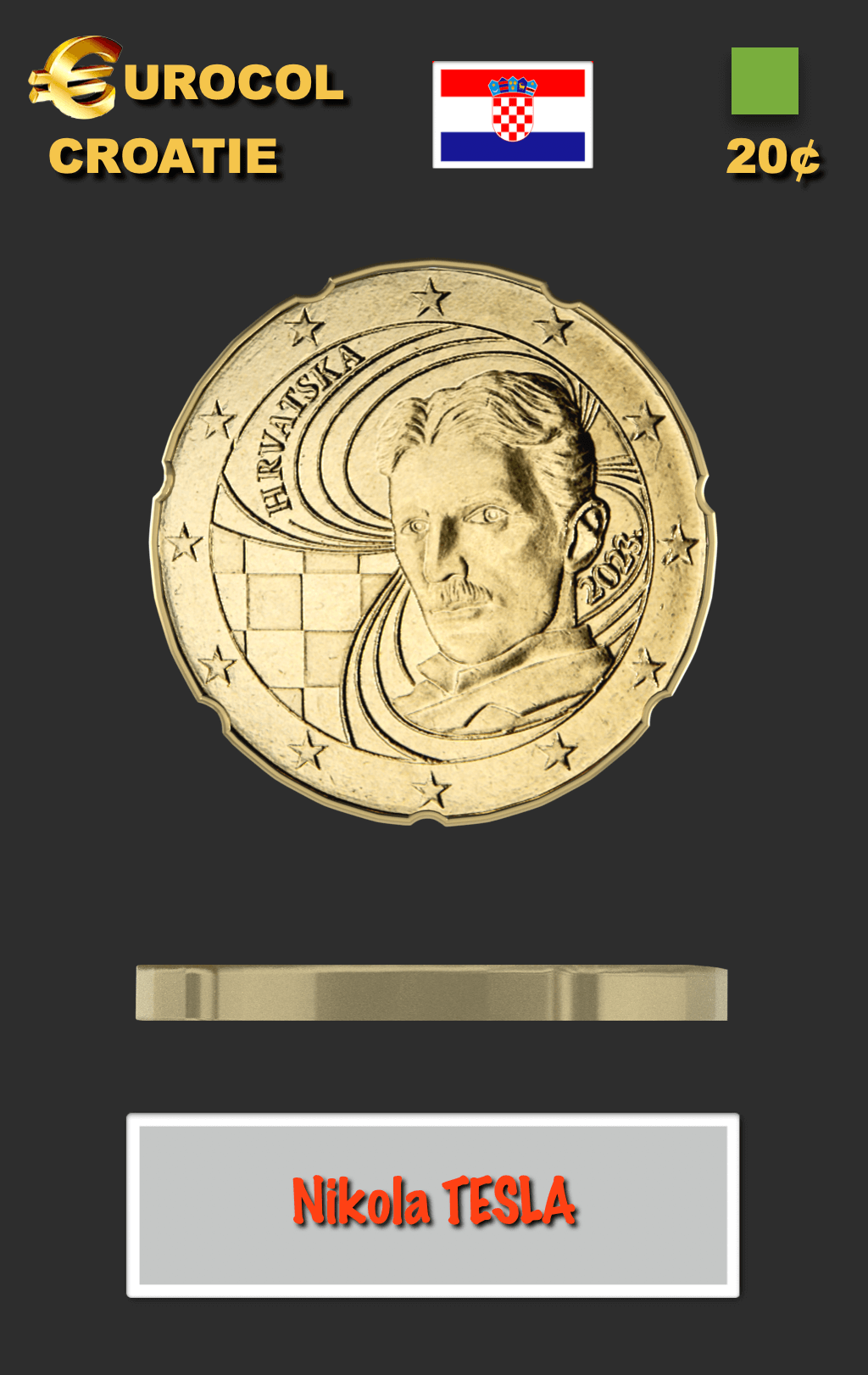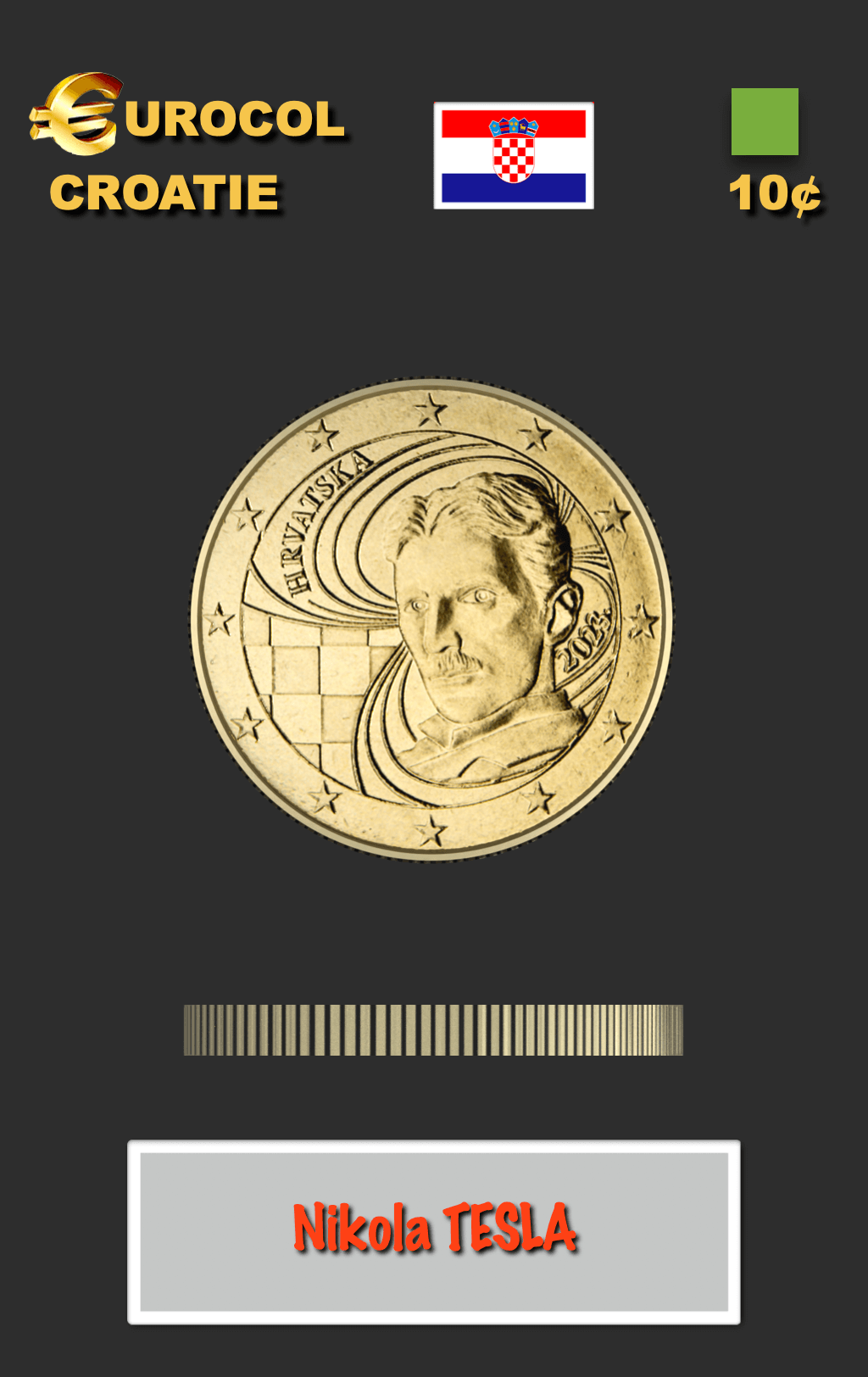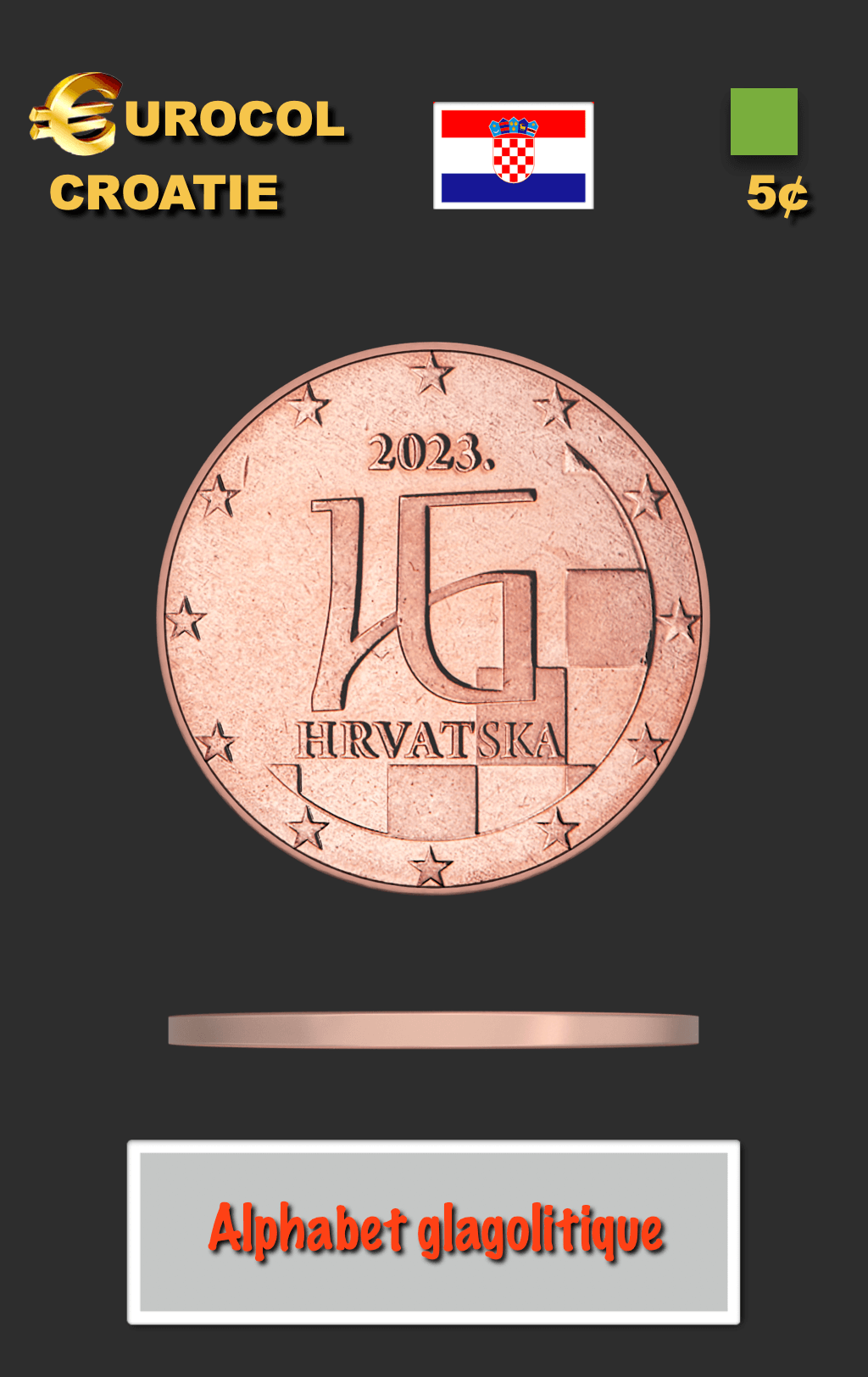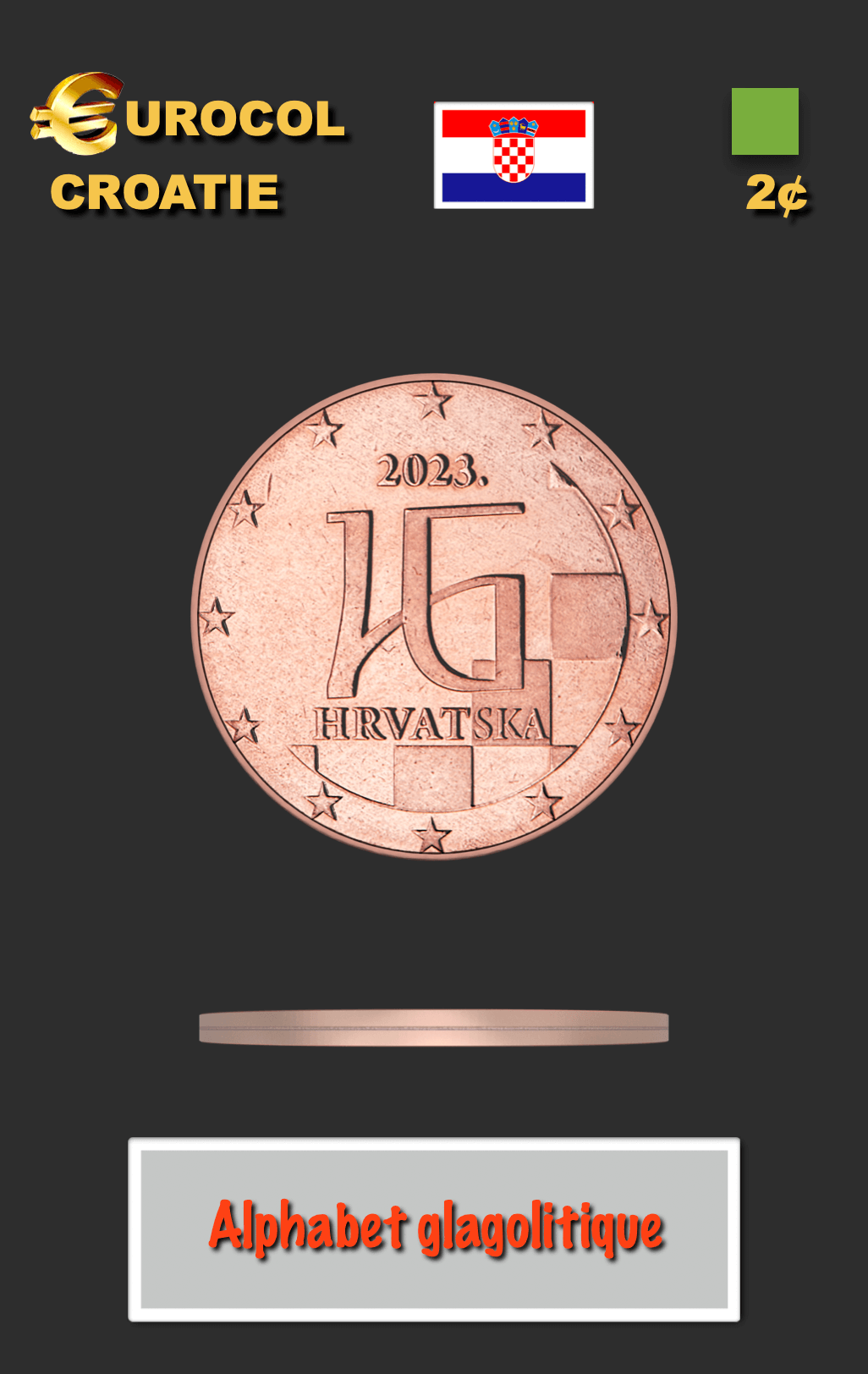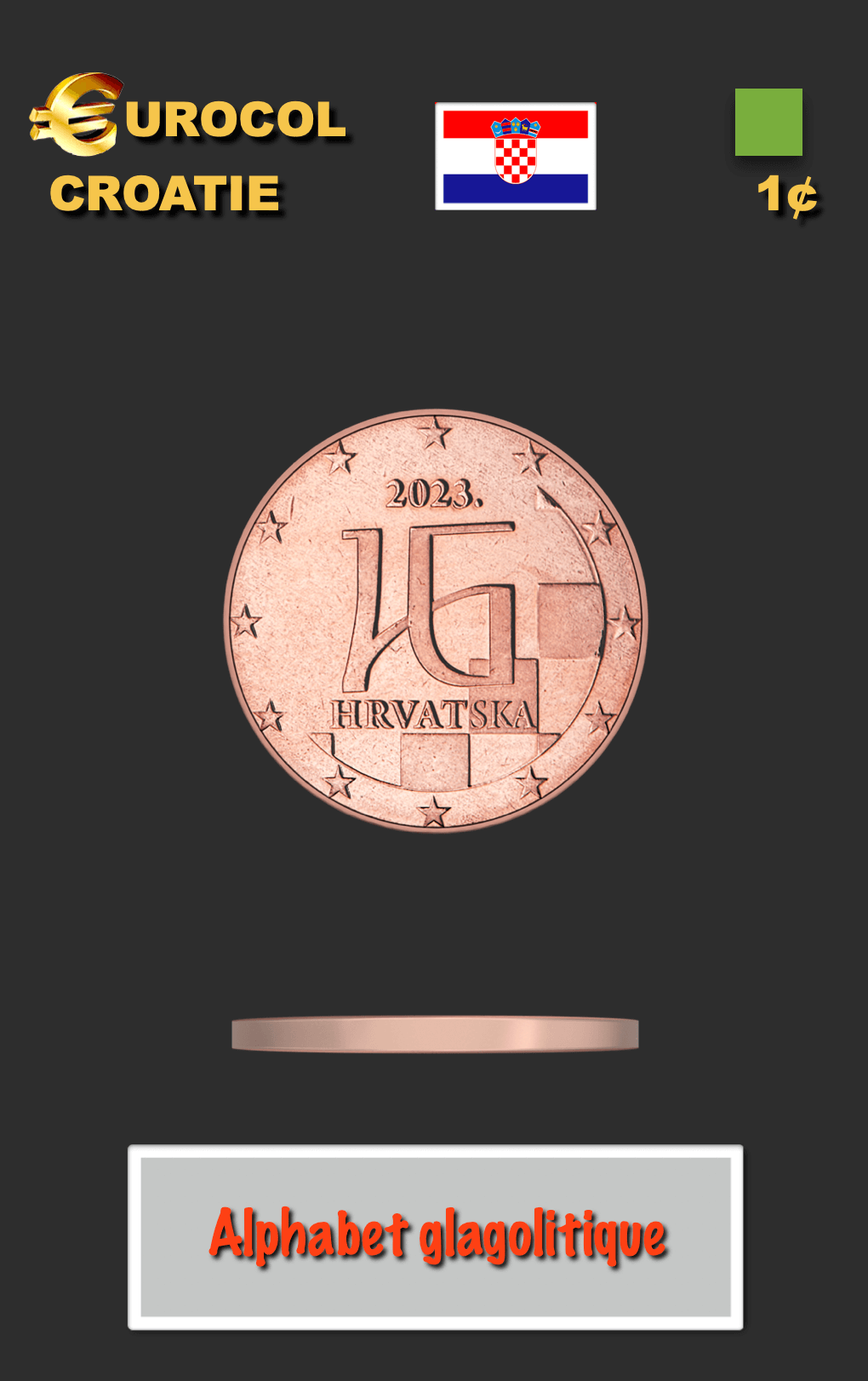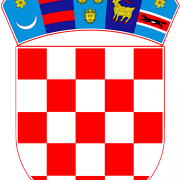Croatia
The coins of the Croatian currency
Croatia has a unique national series since 2023
The Croatian coins are engraved by Ivan Šivak (2€), Jagor Šunde (1€), Domagoj Račić (10, 20 and 50 Cts) and Maja Škripelj (1, 2 and 5 Cts).
These exhibits present four motives:
Contour of Croatia, the Marten, Nikola Testla and the Glagolitic Alphabet
Distribution: 1 1 3 3 - 4 motives
Slice of the coin from 2 € Croatian
![]()
The four motives of the Croatian coins
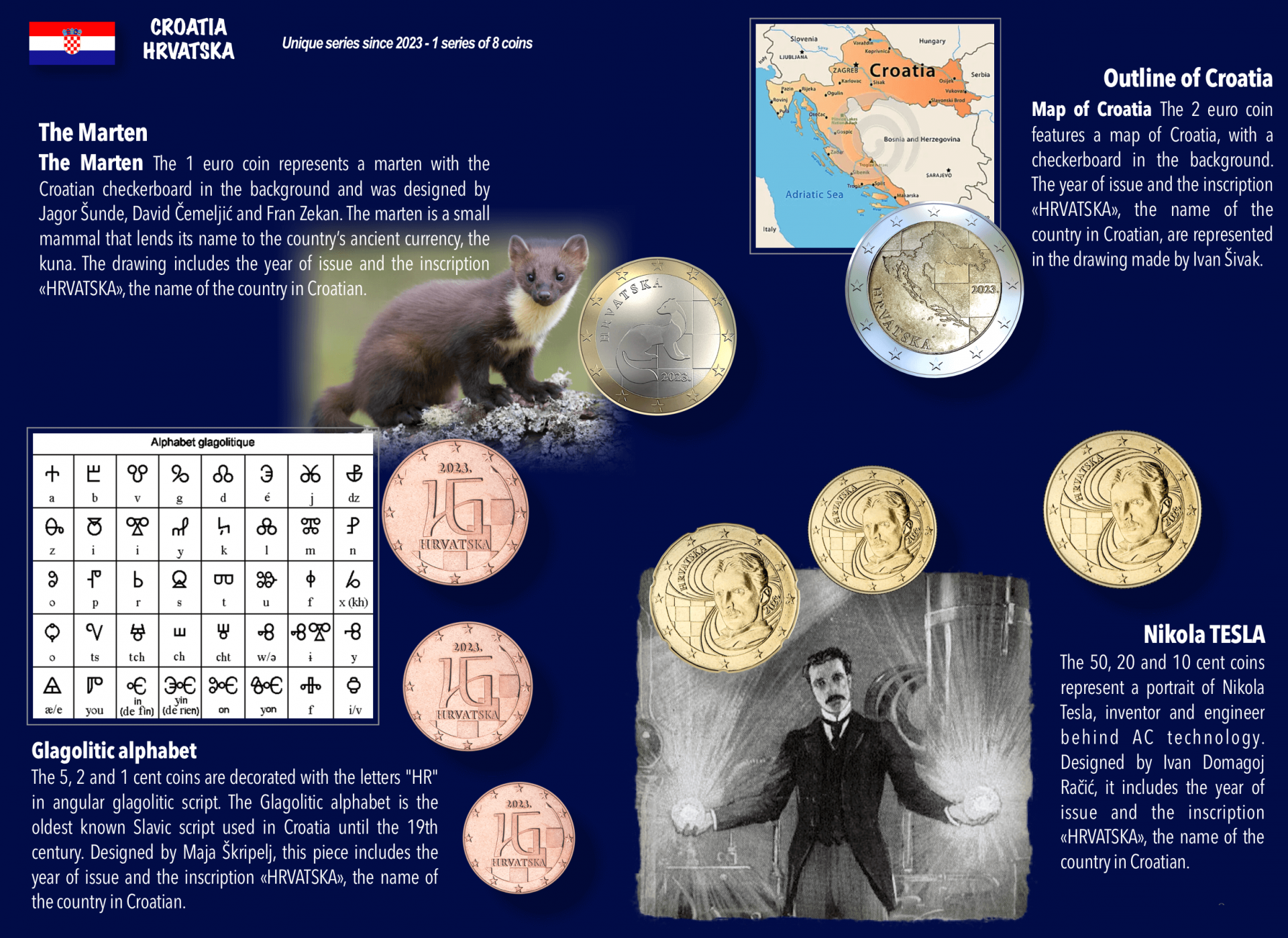
Croatia in a few figures
Official name : Republic of Croatia
Area : 56 594 km²
Population : 3 888 529
Density : 69habitants par km²
Political regime : Parliamentary republic
Capital : Zagreb
Languishes : Croatian
Slogan : None
The Republic of Croatia
Croatia, in long form the republic of Croatia, in Croatian: Hrvatska, is a country of Central and Southern Europe, independent of Yugoslavia since its violent dislocation in 1991. Its capital is Zagreb, the country’s most populous city with over 800,000 inhabitants.
Croatia has been a member of the European Union since 1 July 2013, the WTO since 2000 and NATO since 2009. It joined the euro area and the Schengen area on 1 January 2023.
The country stretches from the eastern edge of the Alps to the north-west and from the Pannonian plains to the north-east, to the Adriatic coast to the south-south-west, passing through the mountainous massif of the Dinaric Alps in the centre.
Croatia is surrounded by Slovenia in the north, Hungary in the north-east, Serbia in the east, Bosnia and Herzegovina in the south-east and Montenegro in the extreme south-east and the Adriatic Sea in the west.
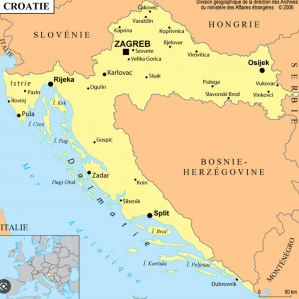
Throughout its history, Croatia has been at the crossroads of four great cultural spaces, which gives a richness to its architectural and artistic heritage. In addition to the Slavic character of its inhabitants which dates back to the end of the century, Croatia has been influenced by Venetian influences on the Dalmatian coast on the one hand, and by Austro-Hungarian influences in the plains of northern Slavonia and in the Danube basin on the other. This inheritance is superimposed on the more widespread pre-Roman and Byzantine one to which it owes its Christian tradition. The immediate vicinity of the Ottoman Empire, from the fifteenth to the nineteenth century, whose expansion stopped on Croatian soil, was also important. The first Christianized Slavic people, from the beginning of the fourth century onwards, the Croats are still overwhelmingly Catholic.
Croatia is a parliamentary, democratic and multi-party republic. It has already experienced three shifts since independence, although the 1990s–2000 was dominated by the Croatian Democratic Union (HDZ) and Franjo Tuđman. The declaration of independence took place in 1991.
The President of the Republic of Croatia (Predsjednik) is the Head of State; he is also the Head of Armed Forces and has the duty to designate the President of the Government (the «Prime Minister») with the consent of the Parliament. It also has some influence on foreign policy. The President of the Republic is elected by direct universal suffrage for a five-year term, renewable once.
Last edited: Mon 10 apr 2023
Add a comment


